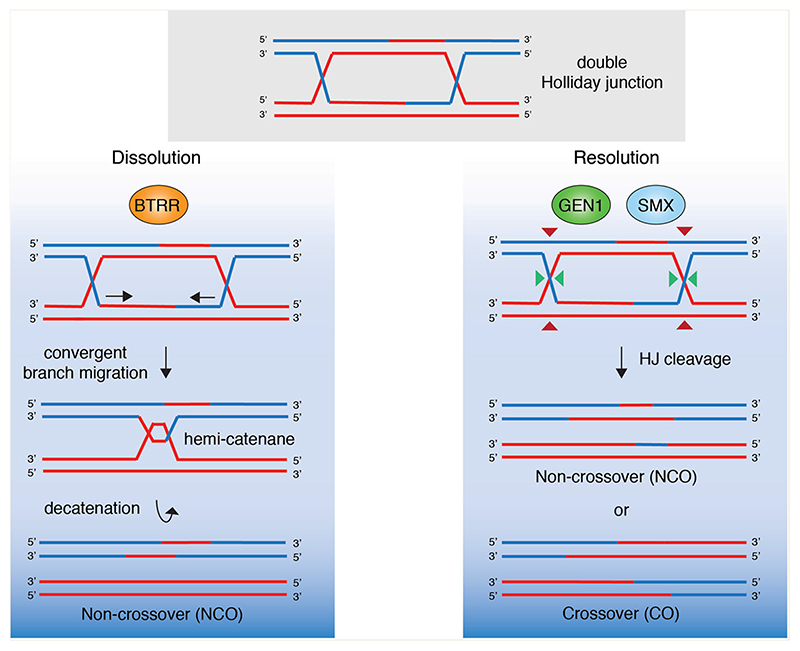Figure 2.
Holliday junction processing in human cells. Covalently linked double Holliday junctions (dHJs), generated during HR are processed by ‘dissolution’ or ‘resolution’. (Left) Dissolution involves the BTRR complex (BLM, Topoisomerase IIIα, RMI1, RMI2). BLM helicase drives convergent branch migration and the resulting hemi-catenane is dissolved by Topoisomerase IIIα. The products of this pathway are exclusively non-crossovers as they do not involve reciprocal exchanges of genetic material between sister chromatids. Right: Holliday junction resolution involves nucleolytic cleavage by the structure-specific endonucleases GEN1 or SMX (SLX1-SLX4-MUS81-EME1-XPF-ERCC1). Resolution gives rise to both non-crossovers (NCOs) and crossovers (COs).

